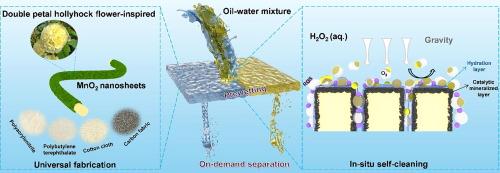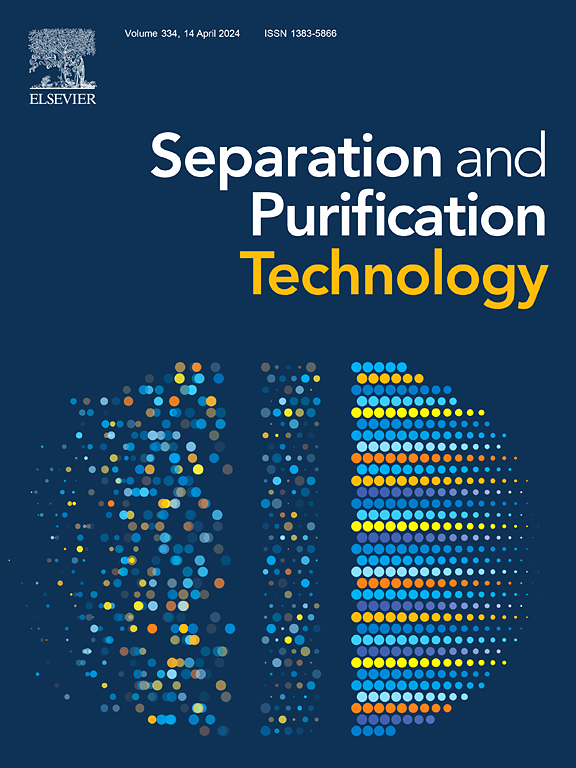Enhancing antifouling and catalytic cleaning Abilities of fabrics for efficient Oil-Water separation
IF 8.1
1区 工程技术
Q1 ENGINEERING, CHEMICAL
引用次数: 0
Abstract
Efficient oil–water separation is critical for environmental sustainability, yet conventional materials often lack the dual antifouling and catalytic self-cleaning capabilities required for long-term performance. This study introduces a novel approach by engineering a biomimetic polyacrylonitrile (PAN)/MnO2 composite fabric through in situ hydrothermal growth of MnO2 nanosheets, creating a hierarchical micro/nanostructure inspired by natural systems. This design uniquely integrates passive antifouling (via superhydrophilic surface and microbubble-induced repulsion) with active catalytic cleaning driven by reactive oxygen species (ROS) generated during hydrogen peroxide decomposition. The composite fabric achieves remarkable separation performance under gravity: a “water-removing” flux of 29,806.4 L m–2h–1 and an “oil-removing” flux of 3,580.4 L m–2h–1, while maintaining > 99.8 % oil rejection efficiency across diverse oil–water mixtures. Crucially, the synergistic passive-active antifouling mechanism effectively mitigates irreversible fouling, a persistent challenge in conventional membranes. This work advances catalytic self-cleaning technologies by demonstrating how biomimetic structural design and multifunctional chemistry can synergize to address complex oil–water separation challenges, offering a transformative solution for environmental remediation.

求助全文
约1分钟内获得全文
求助全文
来源期刊

Separation and Purification Technology
工程技术-工程:化工
CiteScore
14.00
自引率
12.80%
发文量
2347
审稿时长
43 days
期刊介绍:
Separation and Purification Technology is a premier journal committed to sharing innovative methods for separation and purification in chemical and environmental engineering, encompassing both homogeneous solutions and heterogeneous mixtures. Our scope includes the separation and/or purification of liquids, vapors, and gases, as well as carbon capture and separation techniques. However, it's important to note that methods solely intended for analytical purposes are not within the scope of the journal. Additionally, disciplines such as soil science, polymer science, and metallurgy fall outside the purview of Separation and Purification Technology. Join us in advancing the field of separation and purification methods for sustainable solutions in chemical and environmental engineering.
 求助内容:
求助内容: 应助结果提醒方式:
应助结果提醒方式:


